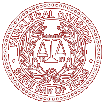
The Ethics of AI in the Legal Profession
Ellen Lockwood, ACP, RP
In August of 2019, the American Bar Association passed a resolution to encourage attorneys and the courts to tackle the ethical and legal issues regarding the use of artificial intelligence (AI) in the legal field. The resolution identified the following issues to be addressed:
- Bias
- Explainabilty (understanding methods and techniques used by AI technology)
- Transparency of AI decisions
- Ethical and beneficial usage of AI
- Controls and oversight of AI and AI vendors
It is no longer a question of if AI will be incorporated and used by the legal profession, but how it will be used. Online legal research already includes AI (e.g., natural language searching), and those involved in ediscovery are familiar with the use of predictive coding.
One danger with AI is bias. The operations of AI are based on identifying patterns in large amounts of data. If the data includes unfair biases, the results produced by the AI technology could be similarly biased. One example would be speech recognition software that is developed only using men in one part of the country. Such software might not work well for women, or people in a different part of the country.
It is the responsibility of paralegals and attorneys to ensure they understand how relevant technology works (explainability). Paralegals and attorneys should be able to explain, at least in general terms, what factors the AI technology considers when arriving at a particular decision. For example, why was a specific case suggested by the online legal research software? Understanding how the AI technology works also helps identify any biases that may exist. Knowledge of the data used by the AI technology, how it works, how it was tested, and the ability to explain all that information results in the transparency of the AI technology.
The legal profession has already seen the benefits of AI technology. Online legal searching with natural language is much easier, and usually gets more relevant results, than trying to set up search queries using only particular terms. And who wants to return to reviewing large volumes of documents for major litigation matters by handling paper, when using ediscovery software is faster and more accurate? These examples illustrate the obvious advantages of AI for the legal profession, as well as for clients.
Attorneys also have a duty of supervision. Simply handing over the assignment to staff or vendors is not enough. The attorney must be able to satisfy the requirements of explainability and transparency.
Client confidentiality and privilege are as important with AI technology as with all other areas of the legal field. If the AI technology is functioning entirely within the law firm, such as storing the software and files on the firm server, then the risk of breaching client confidentiality and privilege is reduced. If, however, the software and/or related files are stored outside the firm, then it is the attorney’s duty to confirm the client’s information is protected. One example would be requiring two-factor authentication for users to log in. It is also wise to review the references of vendors and software providers.
Software and technology are making our lives easier and, in many ways, better. However, the ethical responsibilities for paralegals and attorneys remain. We are required to keep up with technological advances in the legal field, including AI, and educate ourselves regarding the associated ethical issues.
Ellen Lockwood, ACP, RP, is the Chair of the Professional Ethics Committee of the Paralegal Division and a past president of the Division. She is a frequent speaker on paralegal ethics and intellectual property and the lead author of the Division’s Paralegal Ethics Handbook published by Thomson Reuters.
If you have any questions regarding any ethical issue, please contact the Professional Ethics Committee.
Return to the Ethics Articles Home Page
Originally published in the Texas Paralegal Journal © Copyright Paralegal Division, State Bar of Texas.


